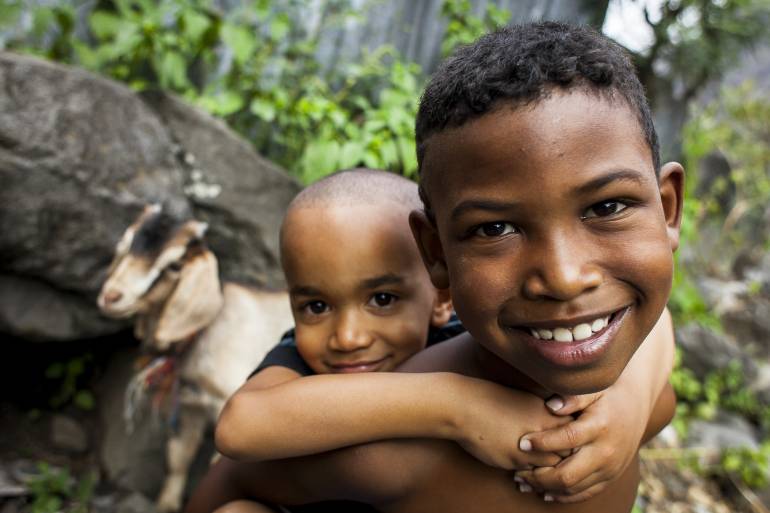This piece was written by Paul Saint-Rose, a student from Reunion Island working at VOC as part of a cultural exchange programme. It forms part of a series called Through Foreign Eyes, in which foreigners share their thoughts on Cape Town’s unique culture.
There is in the Indian Ocean a little piece of wonder called Reunion Island. Located between Madagascar and Mauritius, it is well known for its diversity in landscapes which even led to a UNESCO World Heritage List nomination on 40% of the island in 2010. But Reunion’s diversity goes far beyond landscapes. The island’s history of colonialism and slavery has brought many ethnicities together on the island, mainly African and Asian.
At first, Reunion Island was used as a prison for the colony of Madagascar. Some people say the first inhabitants were prisoners left there to die, but it went other ways. With all the vegetation that grew out of seeds left by birds and wind on the little volcano that was the island at the very beginning, it was just too easy to survive. Fast forward to when the island began to be a populating colony for France.
French people started coming from mainland France to live on the island, but they needed workforce to establish a strong colony, as the island was coveted by other European kingdoms, especially England. Vessels full of slaves from Africa, South Asia and China came to the island, located on the road to the East Indies for centuries to work.
Through time, even before slavery was abolished in 1848, the whole population of the island, white colons with black African, Indian, Malagasy, Arab and Chinese started to mix resulting in nowadays’ ethnic majority of the island, the mixed race. There are also other races (or ethnicities, as we do not like to use the word ‘race’ since for us it refers to the human race and not a special ethnicity.
Using the word race for an ethnicity would sound like you’re making a difference between ethnicities like between animal species) on the island, present as a testimony from Reunion Island’s history of cultural blend. They are the Cafres, from South West African descent and Madagascar, the Malabar, from South East India, the Zarabes, from India’s Gujarat and the Yabs, who are white people integrated to the creole culture of Reunion Island.
Speaking of culture, you would think that with so much different origins and cultures, there has to be some cultural conflicts on the island. Lo and behold, there are none ! People are living at peace, respecting and loving each other. One example of that is religion: on the same street, you can come across a mosque, a church and a Hindu temple. Last week, we witnessed a ceremony for the beginning of sugar cane cutting season where cane cutters were blessed by both a catholic priest and a Hindu priest and they were both really happy to work together.
South Africa has a similar history to Reunion Island (except for the brutality of apartheid). When I arrived in Cape Town, I was hit by the fact that there were mostly black people working in lower-paid wage jobs like supermarket cashiers, salespeople and as domestic workers.
I soon realised that once you go up the corporate ladder, you’ll come across more and more white people. This issue is being addressed by the “transformation” policy, but this is also causing other inequalities: if a white man is more qualified for a job than a black woman who is also applying for that job (which is frequent because of inequalities in education), he’s less likely to get it because she is black and she is a woman. I guess this is the price paid for a more diverse work environment at all levels.
I also noticed something very similar to Reunion Island; the migrants from neighbouring countries are stigmatised. In South Africa, we were warned upon arrival, that thugs and muggers we are from Zimbabwe, Mozambique, or further Nigeria. Similarly in Reunion Island, people who have just arrived on the island and, thus, aren’t integrated to the local culture, like French from mainland France or from Mayotte (another French department in the Comoros archipelago), are put aside and judged. There are many stereotypes on the island, and whereas sometimes it can be funny and innocent (like the 3 Vs for the Malbars: Vilains [ugly],Vantards [show off], Voleurs [Robbers]) for some, it’s not that much of a game with foreigners.
I think the original root of the differences between Reunion and South Africa is that Reunion was a desert at first while SA had people living there before the spread of European empires, which made it harder and harder politically as everyone was claiming it as its own land. At the end of the day, both countries enjoy a great diversity. VOC






 WhatsApp us
WhatsApp us 

